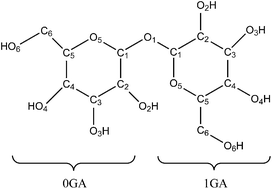Effects of the temperature and trehalose concentration on the hydrophobic interactions of a small nonpolar neopentane solute: a molecular dynamics simulation study†
Abstract
The influence of trehalose on the temperature-induced changes of hydrophobic interactions is investigated employing classical molecular dynamics simulations. The neopentane molecules are used to model typical nonpolar entities. Six different trehalose concentrations are used and for each concentration five different temperatures are considered. The neopentane–neopentane potentials of mean force (PMF), selected site–site distribution functions involving different solution species, the hydrogen bond properties and trehalose induced modifications of the translational diffusion coefficients of solution species are reported. The calculations of PMF followed by estimation of the association constant values suggest that the trehalose induced reduction in the hydrophobic interactions observed at low temperature is getting reduced at higher temperature. This finding is further supported by calculating the neopentane–water distribution functions. Our calculations of the hydrogen bond properties reveal that in contrast to a pure water system, the average number of water–water hydrogen bonds in a concentrated trehalose solution is insensitive to the temperature change. The analyses of trehalose cluster structures reveal the formation of a higher order trehalose cluster on increasing the trehalose concentration and the breaking of these higher order clusters as temperature increases. With increasing the trehalose concentration, we observe retardation of the translational motion of all solution species and this slowing down of the translational dynamics is more pronounced for trehalose than for water.


 Please wait while we load your content...
Please wait while we load your content...